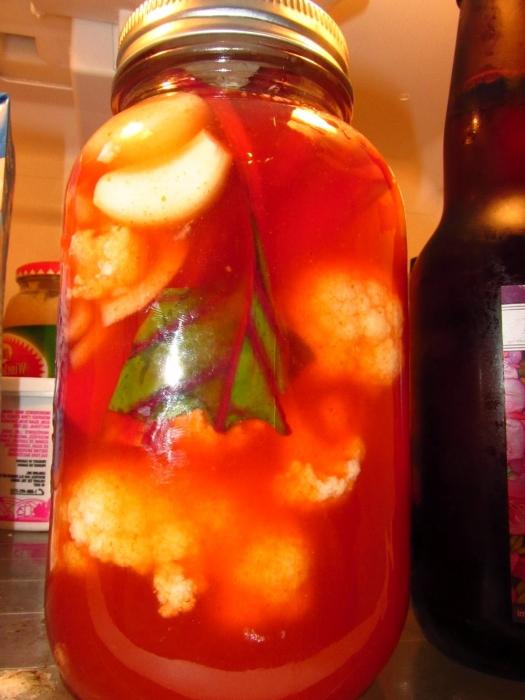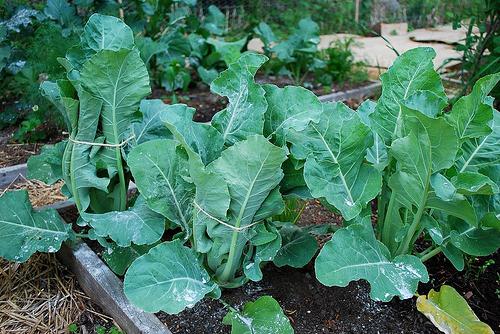Mushroom of hare cabbage. Mushroom cabbage, or sparessis curly
An unusual form of cabbage mushroom refers torare species. In nature it occurs so infrequently that most countries provided him with protection by entering into his Red Book. It grows in the forests from August to November. It develops on stumps and near trees, creeping along their protruding roots.

It's a parasitic fungus. Because of it, trees are affected by red rot. For a person it is very useful. It belongs to the category of edible fungi and is used in medicine, serious medicines are being prepared from it. For use in cooking and medicine it is specially cultivated.
origin of name
In shape, an unusual fungus is similar to a large headcauliflower. Hence the popular name "hare cabbage". In Latin it is called Sparassis crispa (sparessis curly). And in translation from English its names sound like "mushroom-brain", "mushroom-ruches", "mushroom-cauliflower". In Russia it is accepted to call it mushroom or hare cabbage.
Areal
The distribution of the fungus is quite extensive. It occasionally occurs in the territory stretching from Europe to Sakhalin. I like the soils located in the north of the Caucasus and Georgia. In addition, mushroom cabbage, or sparrows, is curly, grows in the North American forests. Suitable for its habitat and the conditions of Russian forests. However, it can be detected infrequently.

He prefers to settle in naturalecosystems, formed around pines, larch, oak and beech. Its fruiting bodies are comfortably arranged on decrepit hemp or denuded rhizomes of trees. They can easily be confused with another edible species of sparasses, who prefer to live in spruce forests. In Sparassis nemecii, the color of the fruiting bodies is whitish, and there are no denticles on their branchlets.
Morphology of mushroom cabbage
Mushrooms, developing, reach considerable sizes. Some of them grow up to 50 centimeters, and sometimes even larger in diameter and weigh several kilograms (there are even ten-kilogram giants). However, among these giants is more common mushroom cabbage with annual fruit bodies, whose diameter varies from 5 to 30 centimeters.
The structure of fruit bodies is quite simple. To the short central hemp are attached coral-like branching lobes. Their tips are crowned with unclear inverted-funnel-shaped hats.

The size of the hats is small, only 1-3 centimeters. Their edges are wavy, wrapped, often dissected. Center hats, initially milky-white, eventually darkening to brownish shades, with a bare smooth or rough surface varies from dark cream to pale brown and even to intensively-ocher tones.
The color of the fleshy-leathery fabric is white. Drying, it turns into a waxy-hornlike consistency. A rare mushroom hare cabbage exudes a pleasant smell and has a wonderful taste. In the whitish cream or grayish hymenophore the consistency is waxy. There are no cystids. In non-amyloid, hyaline, broadly ellipsoidal spores, at the base of short and oblique, the walls are slightly thickened.
Technology of cultivation of mushroom cabbage
Technology of hare cabbage cultivationcarefully worked Japanese and Americans. They patented some cultivated varieties. The main varietal difference in fungi is maturation (55-80 days) and color palette of fruit bodies - variations of white and cream shades.
Mushroom cabbagesterilized substrates. Prepare them by mixing sawdust with wheat bran. At the same time, good yields are obtained. On 3 kg of the substrate grows up to 800 g of fruit bodies.
The benefits of sparse crooked
Traditional medicine and fungotherapy are widely usedcabbage. Its fruit bodies are saturated with polysaccharides, which are inherent in antitumor and immunomodulating activity. They include a natural antibiotic that can suppress the development of methicillin-resistant Staphylococcus aureus.
In addition, they contain antimicrobial bioactiveComponents. They treat cancer diseases (in particular melanoma and sarcoma). In gynecology means based on sparse-hair curly remove hormonal disorders, treat benign and oncological tumors. It is included in the composition of specialized diets. Mushroom cabbage as an active ingredient is added to drugs used to treat all types of diabetes and viral hepatitis.

Another mushroom hare cabbage is used in dietetics. Its reduced caloric content contributes to successful weight loss. Because it leads to a persistent drop in weight, they are treated with obesity. In this case, the body is not deprived of vitally important minerals and amino acids.
The use of mushroom cabbage in cooking
Overgrown mushrooms try not to use incooking. They are quite tough and have a bitter taste. Young mushrooms are suitable for cooking. Their texture and taste are similar to morels. They are excellent in fried, dried and boiled. Good mushroom cabbage cabbage as an additive to any dish. With it, you get excellent soups, salads, snacks and second courses.
Salad merchants in the markets often sell thesemushrooms, offering them in marinated form. True, you need to carefully consider their choice. They are easily confused with another kind of mushroom - Tremella, available in the assortment of bazaar breakdowns.
</ p>




